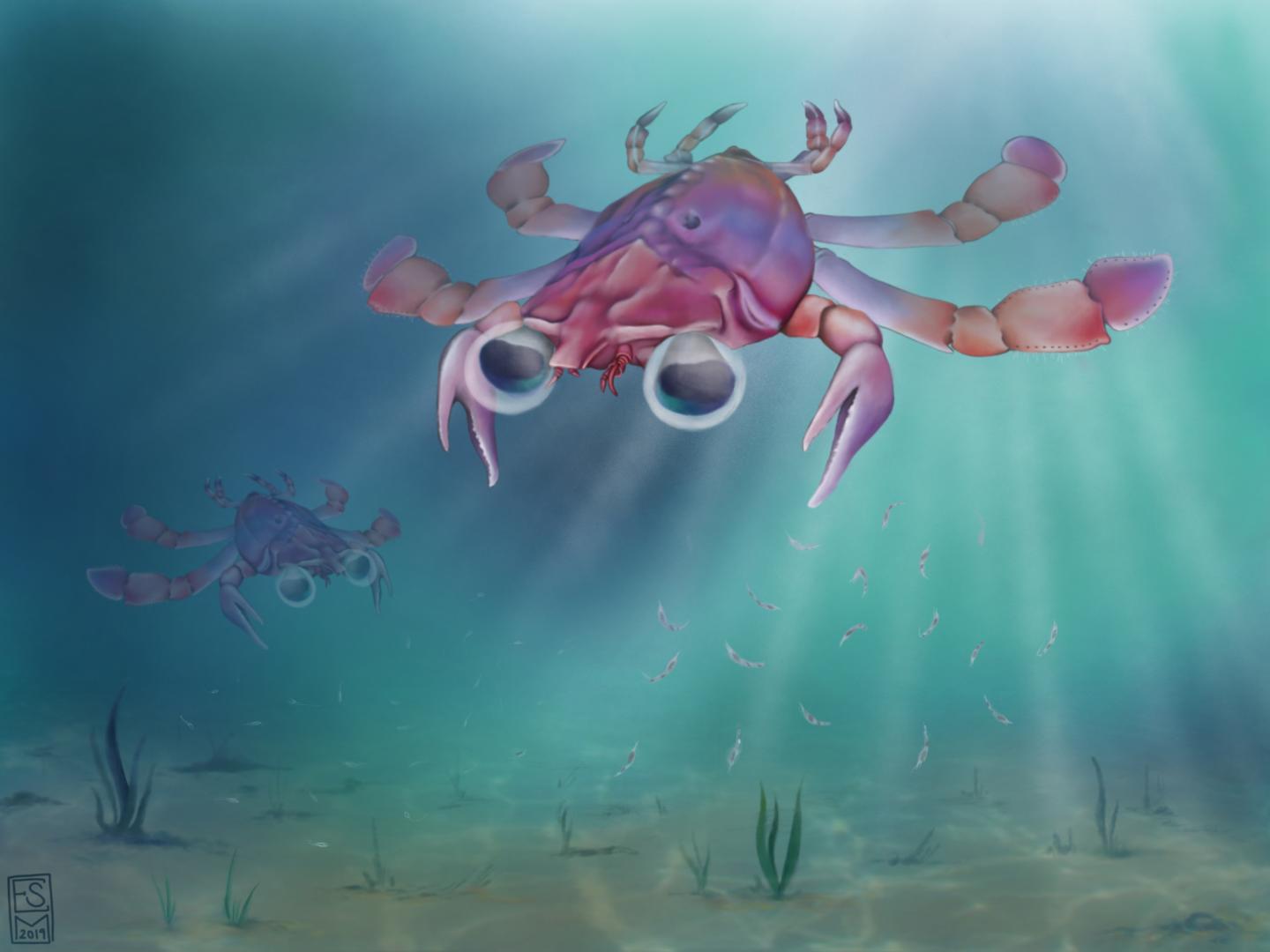Crabs seem to be all fun and games until they pinch you, but you may agree that their 95-million-year-old ancestor looked quite bizarre. A recently-discovered ancient platypus crab grouped into the chimera species may make scientists think again about how modern-day crabs came to exist.
An international group of scientists led by Yale-based paleontologist Javier Luque uncovered hundreds of well-preserved fossils from Colombia and the United States. The fossils take us back to the mid-Cretaceous era, which scientists say was 90 million to 95 million years ago. In addition to the ancient platypus crab, researchers also uncovered hundreds of small comma shrimp fossils, true shrimp and other fossils.
Researchers were mainly baffled by Callichimaera perplexa, which they say is the earliest swimming arthropod specimen that had paddle-like legs. The only other species that could be attributed similar properties was the sea scorpion, which they believe became extinct 250 million years ago. Researchers got inspiration for the name from a legendary mythological creature called the chimera, which is believed to have had the body properties of more than just animal. The full name Callichimaera translates to “perplexing, beautiful chimera.”
Even though the appearance of the recently-discovered ancient platypus crab is mainly bizarre, Luque noted in a statement that it’s still “unusual and cute.” It apparently had large eyes with no sockets, a leg-like mouth, an exposed tail and a long body, which are often attributed to pelagic crab larvae. Researchers believe several larval traits can be seen in the “perplexing chimera,” suggesting they were contained and then amplified in adult animals through changes in times and development rates. Researchers call this process “heterochrony,” which often leads to the evolution of new body plans.
“Callichimaera perplexa is so unique and strange that it can be considered the platypus of the crab world,” Luque said in a statement. “It hints at how novel forms evolve and become so disparate through time. Usually we think of crabs as big animals with broad carapaces, strong claws, small eyes in long eyestalks, and a small tail tucked under the body. Well, Callichimaera defies all of these ‘crabby’ features and forces a re-think of our definition of what makes a crab a crab.”
The study which describes the ancient platypus crab was published in the journal Science Advances on Wednesday.
“It is very exciting that today we keep finding completely new branches in the tree of life from a distant past, especially from regions like the tropics, which despite being hotspots of diversity today, are places we know the least about in terms of their past diversity,” Luque said.





